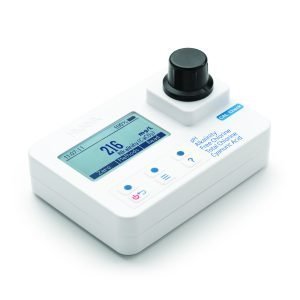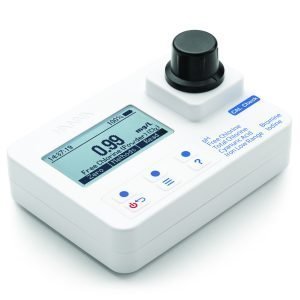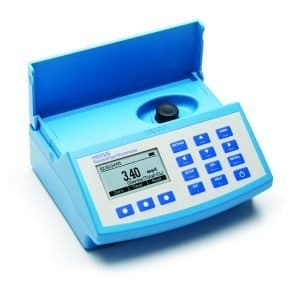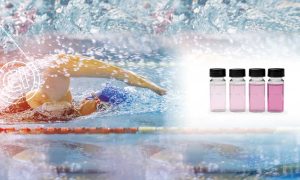Having swimming pool is not easy as it sounds. Dealing with water that has to be sanitize at all times, means dealing with a combination of chemicals. You already use chlorine for water sanitation, and you measure it frequently so you can keep fighting with all the bad stuff in the water (such as microorganizms, algae, organic contaminates…).You keep adding your chlorine, but when measuring, it seems that chlorine is disappearing faster. You will add even more, but that is disappearing too…
What is happening? Are you doing something wrong? How to stop it? Maybe there is something that will help me?
The best possible helper in this matter is cyanuric acid. And you should use it regulary for your pool.
What is cyanuric acid?
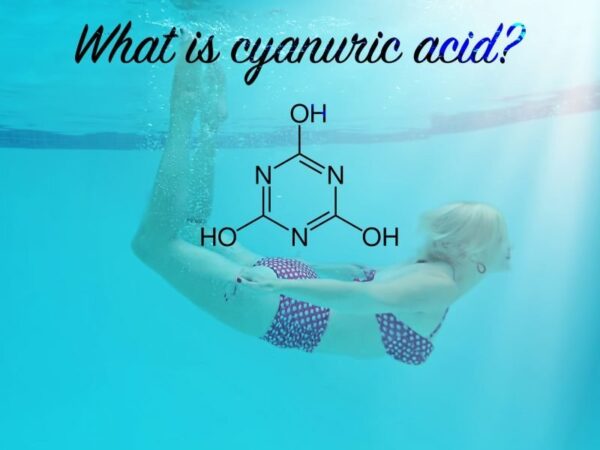
Cyanuric acid is a white crystalline powder which dissolves slowly in water, and because it is weak acid, hardly has any effect of the pH of the pool. In the pool industry cyanuric acid is known as pool stabilizer, pool conditioner, or chlorine stabilizer.
Cyanuric acid is a chemical compound in the triazine family which means it has three nitrogens and three carbon atoms in ring. That gives him aromatic character. Cyanuric acid can form weak and temporary bonds with chlorine. When binding to free chlorine it can release it slowly and extend the time of sanitation.
Why should you use cyanuric acid?
Chlorine in the pool is divided into Free chlorine and Total chlorine. Free chlorine is the amount of chlorine that is available for sanitation of the pool water. Combined chlorine is the amount of chlorine that is being bond to the contaminants in the pool water. Total chlorine is the amount of the free and combined chlorine.
When chlorine is added to the pool, it transforms into hypochlorite ions. Those ions will break apart when ultraviolet (UV) rays hit them. Because of that, chlorine will evaporate, which will lead to small concentration of free chlorine that can sanitize pool water. Half of free chlorine that is added to pool water will be gone within 15-20 min of exposure to UV rays.
By adding cyanuric acid you will extend the life of the chlorine and it will be shielding it from UV. Cyanuric acid stabilizes the chlorine ion and it is making it more resistant to any kind of chemical changes.
Do you really need cyanuric acid? Yes!
Cyanuric acid is protective agent for your chlorine in the pool. It prevents evaporation of chlorine due to UV destruction and it is extending the lifespan of the chlorine in the pool. Because of that, minimal effort is needed to manage your pool chemistry and gives you more time to enjoy in summer and swimming.
Is cyanuric acid safe for pools?
Cyanuric acid has low levels of toxicity so it is safe to use in pool water and it won’t cause any health concerns for swimmers. But that doesn’t mean you don’t have to be carefull. If the concentration of cyanuric accid is high, that means that chlorine has reduced ability to kill bacteria and viruses which can lead to their overgrowth. This happens because of the intreaction of cyanuric acid with chlorine. The ideal range for cyanuric acid should be between 30 and 50 ppm. Levels around 50 ppm will help that chlorine do it’s job and not be demolished by UV rays.
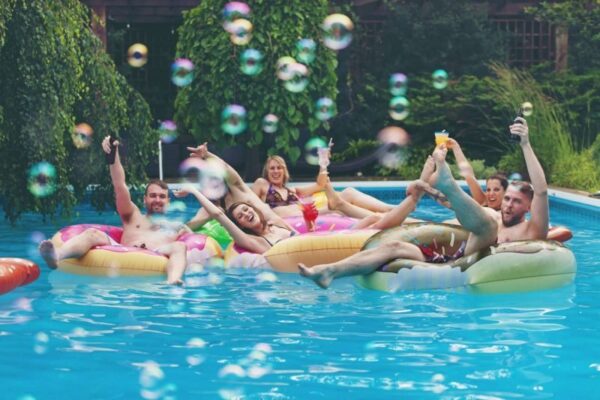
How to measure cyanuric acid?
For measuring cyanuric acid Hanna Instruments have several solution depending on your needs.
Just for measuring cyanuric acid check our Cyanuric Acid Portable Photometer with CAL
If you want to measure more parameters in your pool water you should check pH, Alkalinity, Free Chlorine, Total Chlorine, and Cyanuric Acid Photometer – HI97104
HI97104 is an advanced portable photometer for the measurement of pH, alkalinity, cyanuric acid, free chlorine, and total chlorine in water. This meter offers a superior optical system that utilizes a reference detector and narrow band interference filters for extremely fast and repeatable measurements.
- No warm up time before taking a measurement
- Tutorial mode for step-by-step instructions
- Uses either powder or cost saving liquid reagents
If you want to combine measure of cyanuric acid, pH and some minerals we would recommend Bromine, Chlorine, Cyanuric Acid, Iodine, Iron, and pH Portable Photometer with CAL Check – HI97101
HI97101 is an advanced portable photometer for the measurement of bromine, chlorine, cyanuric acid, iodine, iron, and pH in water. This meter offers a superior optical system that utilizes a reference detector and narrow band interference filters for extremely fast and repeatable measurements.
- No warm up time before taking a measurement
- Tutorial mode for step-by-step instructions
- CAL Check to verify meter performance
For more professional measures you should use Pool and Spa Photometer – HI83326
HI83326 is a compact, multiparameter photometer for use in pool and spa applications. The meter is one of the most advanced photometers available with an innovative optical design that utilizes a reference detector and focusing lens to eliminate errors from changes in the light source and from imperfections in the glass cuvette.
This meter has 12 different programmed methods measuring 11 key water quality parameters and also offers an absorbance measurement mode for performance verification and for users that would like to develop their own concentration versus absorbance curves. Pool and spa parameters include alkalinity, free chlorine, nitrite, cyanuric acid, bromine, copper, iron, ozone and phosphate which are critical to maintaining a healthy system.
To save valuable laboratory benchtop space, the HI83326 doubles as a professional pH meter with its digital pH/temperature electrode input. Now one meter can be used for both photometric and pH measurements.
Author: Tajana Frančić, mag.nutr.

